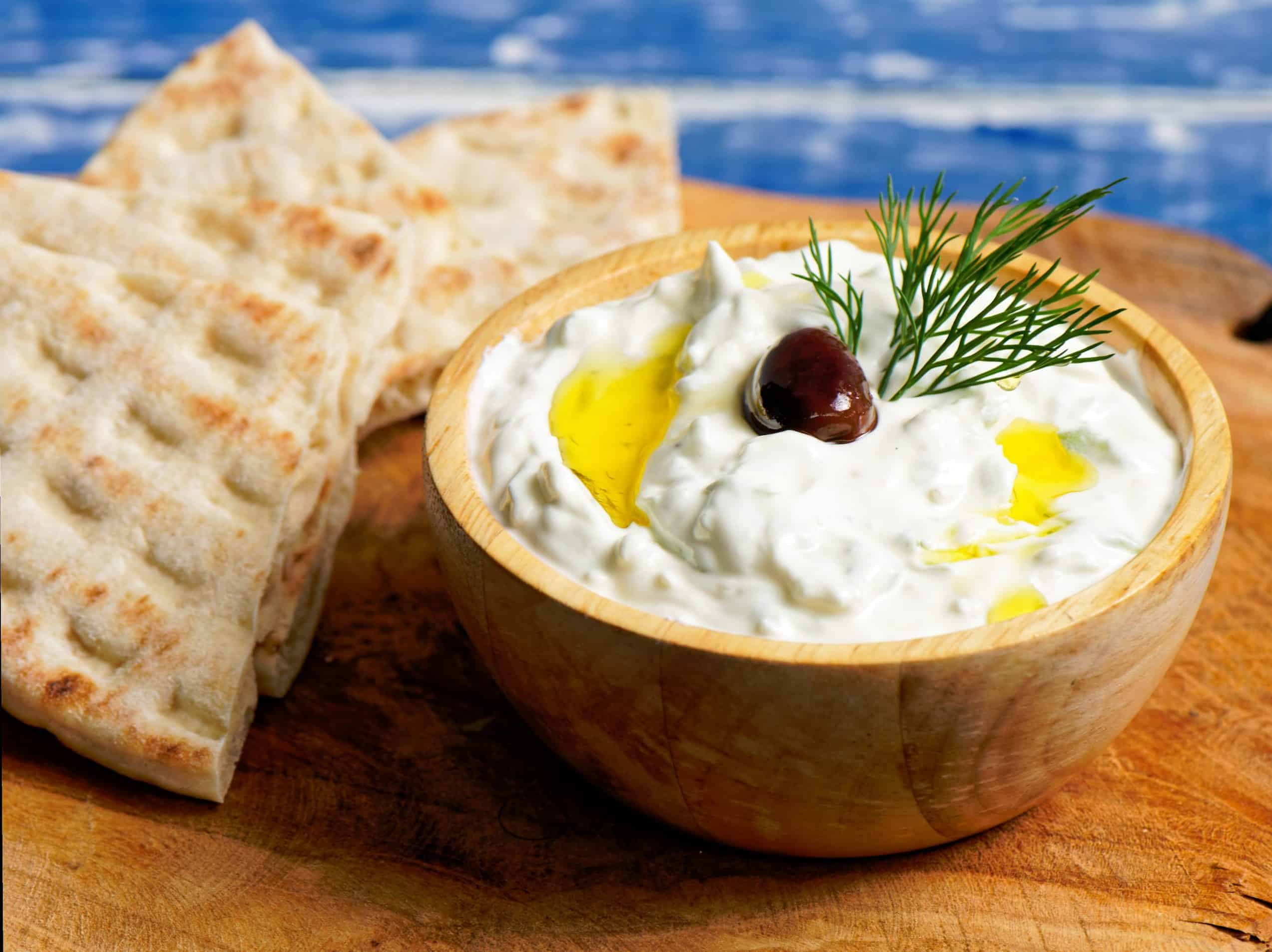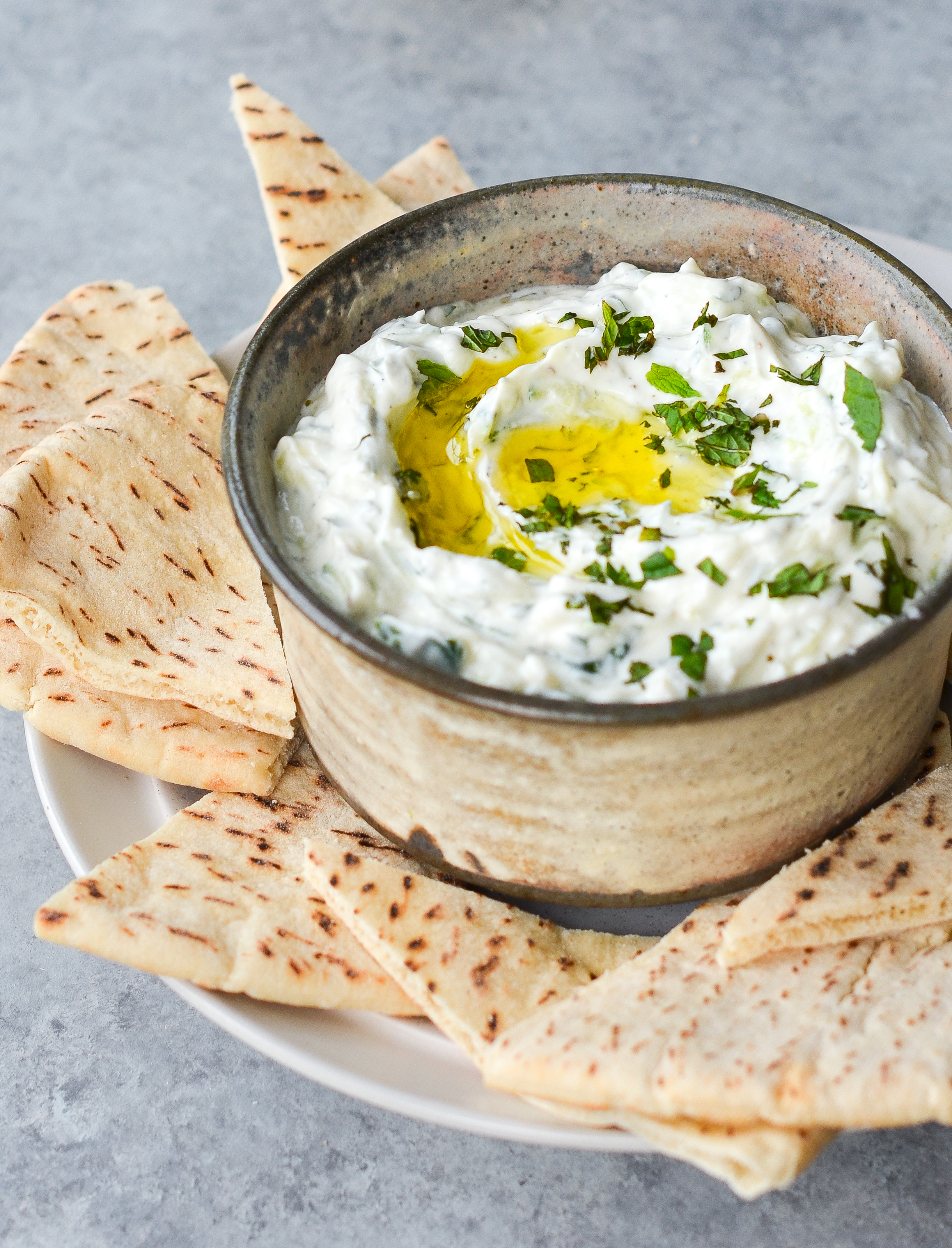History of Tzatziki - known as Caciki or Tarator
:max_bytes(150000):strip_icc()/145409_GreekTzatziki_ddmfs_3x4_3903-1475fff213ec4190bb847213c7b5011a.jpg)
Tzatziki (Greek: τζατζίκι, tzatzíki, [d͡zaˈd͡zici]), also known as cacık (Turkish pronunciation: [dʒaˈdʒɯk]) or tarator, is a type of dip, soup, or sauce originating from the cuisines of Southeastern Europe and the Middle East. It is crafted from salted strained yogurt or diluted yogurt, combined with cucumbers, garlic, salt, olive oil, and sometimes vinegar or lemon juice. Herbs such as dill, mint, parsley, and thyme are often included in the mixture. Tzatziki is commonly served as a cold appetizer (mezze), a side dish, or as a condiment for souvlaki, gyros sandwiches, and various other dishes.

Tzatziki, a traditional Greek condiment, has a rich history dating back centuries. This flavorful and refreshing sauce has deep roots in Greek cuisine, and its evolution is intertwined with the cultural and culinary traditions of the region.
The origins of tzatziki can be traced back to ancient times, where yogurt was a staple in the Mediterranean diet. Yogurt, which is made by fermenting milk with beneficial bacteria, has been a part of Greek gastronomy for thousands of years. The Greeks recognized its nutritional value and versatility, using it in various dishes and preparations.:max_bytes(150000):strip_icc()/Tzatziki-ddmfs-beauty-02-331594f2ba6a47de8f0262aad8103e61.jpg)
As yogurt became a dietary mainstay, the idea of combining it with other ingredients to create a sauce likely emerged organically. Garlic, a common Mediterranean herb known for its strong flavor, was likely one of the first additions to yogurt. The use of cucumbers, with their cool and crisp texture, soon followed, adding a refreshing element to the mixture. The resulting concoction was a harmonious blend of creamy yogurt, pungent garlic, and crunchy cucumber – the early version of tzatziki.
Tzatziki gained popularity throughout Greece, becoming a fundamental component of many meals. Its versatility allowed it to accompany a wide range of dishes, from grilled meats and fish to vegetables and pita bread. The sauce became a beloved and iconic part of Greek cuisine, reflecting the simplicity and freshness that characterizes the region's traditional foods.
Over time, the popularity of Greek cuisine spread beyond the borders of Greece, introducing tzatziki to international audiences. With the global appreciation for Mediterranean flavors and healthier eating habits, tzatziki found its way into kitchens and restaurants worldwide. It became a staple in Middle Eastern, Mediterranean, and even some Western cuisines.
Today, tzatziki is enjoyed around the globe, served as a dip, condiment, or accompaniment to various dishes. Its enduring popularity speaks to the timelessness of its simple yet harmonious combination of ingredients. Tzatziki's history is a testament to the enduring appeal of traditional recipes and the ability of certain culinary creations to transcend cultural boundaries.
Basic Recipe for Traditional Greek Tzatziki:
Ingredients:
- 1 cup Greek yogurt
- 1 cucumber, peeled, seeded, and finely chopped or grated
- 2 cloves garlic, minced
- 1 tablespoon extra-virgin olive oil
- 1 tablespoon fresh lemon juice
- 1 tablespoon fresh dill, chopped
- Salt and pepper to taste
Instructions:
- Prepare the Cucumber:
- Peel the cucumber and cut it in half lengthwise.
- Use a spoon to scoop out the seeds.
- Finely chop or grate the cucumber.
- Drain Excess Liquid:
- Place the chopped or grated cucumber in a fine-mesh sieve or cheesecloth.
- Sprinkle a little salt over the cucumber and let it sit for about 10-15 minutes to allow excess liquid to drain.
- Prepare the Yogurt:
- In a bowl, combine the Greek yogurt, minced garlic, olive oil, and lemon juice.
- Mix well to ensure the ingredients are well incorporated.
- Add Cucumber and Dill:
- After draining the cucumber, squeeze out any remaining liquid with your hands.
- Add the cucumber to the yogurt mixture.
- Stir in the chopped fresh dill.
- Mix thoroughly.
- Season and Chill:
- Season the tzatziki with salt and pepper to taste.
- Cover the bowl and refrigerate for at least 1-2 hours to allow the flavors to meld.
- Serve:
- Before serving, taste and adjust the seasoning if necessary.
- Garnish with a drizzle of olive oil and a sprinkle of fresh dill.
- Enjoy:
- Serve the tzatziki as a dip with pita bread or fresh vegetables, or as a condiment with grilled meats and fish.
Feel free to adjust the quantities of ingredients according to your taste preferences. Tzatziki is a versatile sauce, and you can customize it based on your liking.
I share tzatziki recipe videos below;
How to Make Greek Tzatziki Sauce;
Easy Greek Tzatziki Sauce (Cucumber Yogurt Dip);
Simple Tazatziki Sauce Recipe;
How to make Tzatziki - Creamy & With Lots of Garlic;
How To Make Tzatziki | Easy Tzatziki Recipe;
References;
- "Eva's Classic Greek Tzatziki SauceThursday for Dinner - Cooking Videos of Family Recipes - Thursday for Dinner - Cooking Videos of Family Recipes". Thursday for Dinner - Cooking Videos of Family Recipes. Archived from the original on 3 January 2015. Retrieved 5 February 2015.
- Grigson, Jane; Yvonne Skargon (2007). Jane Grigson's Vegetable Book. U of Nebraska P. pp. 239–40. ISBN 978-0-8032-5994-2. Retrieved 27 July 2010.
- "Eva's Classic Greek Tzatziki Sauce". Thursday for Dinner - Cooking Videos of Family Recipes. Archived from the original on 3 January 2015. Retrieved 5 February 2015.
- Marks, Gil (17 November 2010). Encyclopedia of Jewish Food. HMH. ISBN 9780544186316.
Thank you for reading my article!
You can complete great comment tasks with commenting. #cucumber #yoghurt #nobake #tzatziki #sauce #cuisines #foodinspiration #caciki #tarator


























































